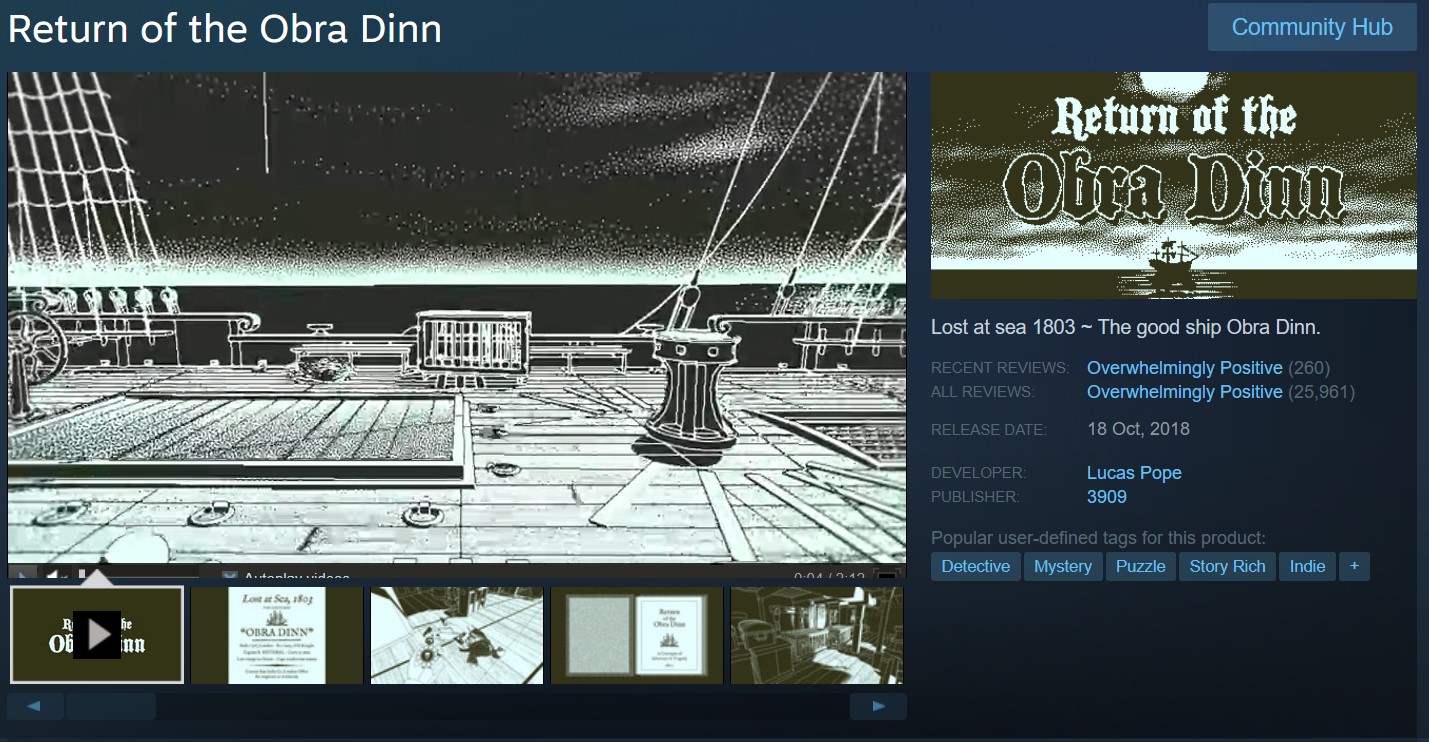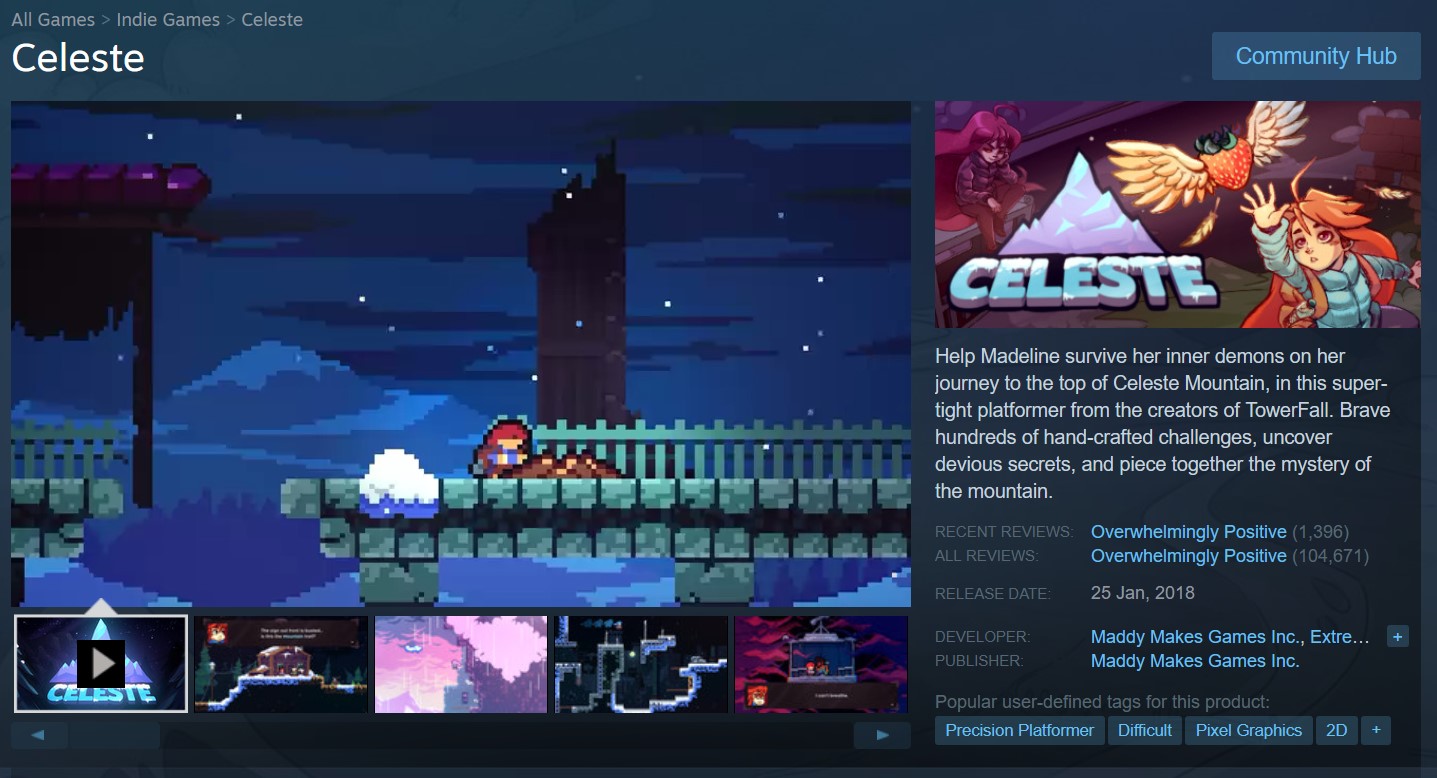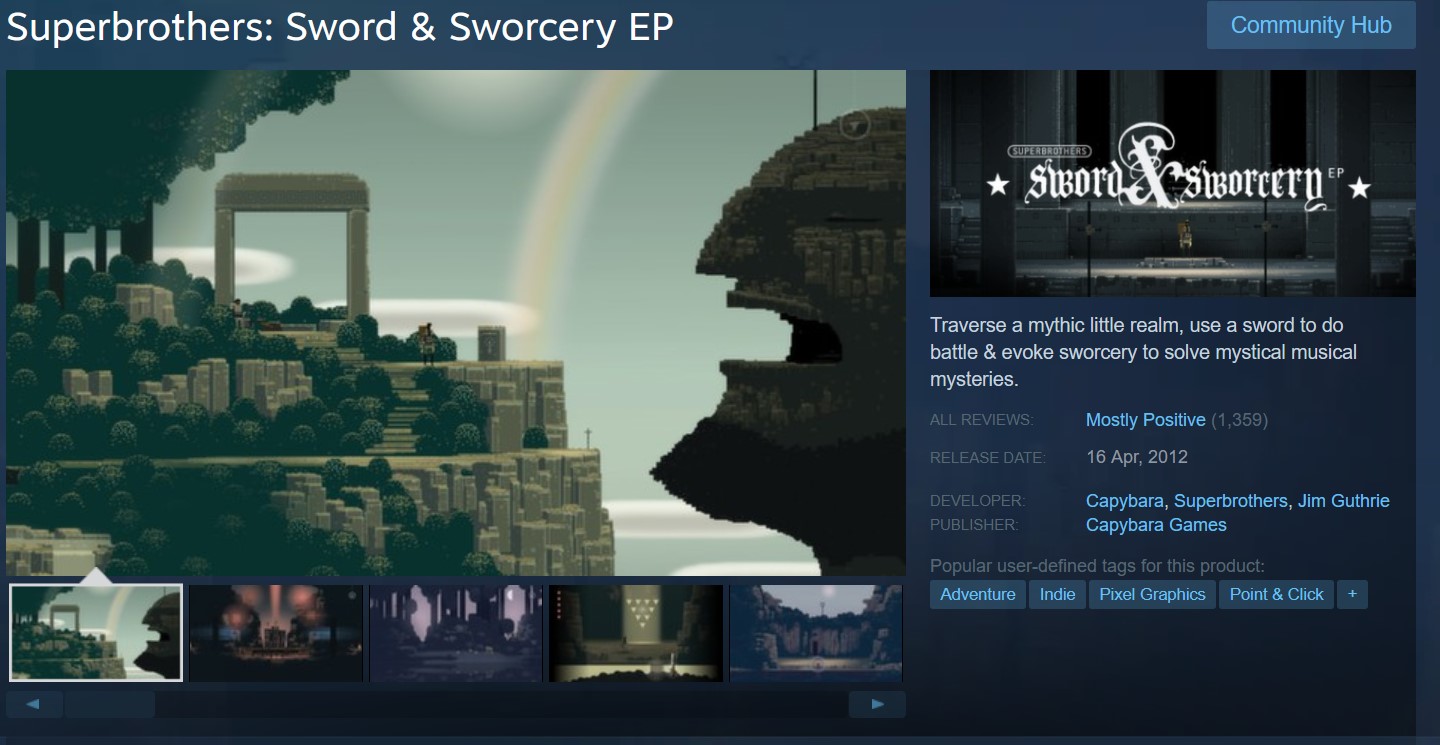Download: "Wishlist Workshop Part 4 Blueprint (PDF)" Here
Find Your Game's Hook
Indie Game Wishlist Workshop Part 4
The more you study your own game... the better you understand your game and how it fits in your market... the more likely you'll come up with a "hook" that will appeal to your target player.
And all it takes is ONE simple appeal that can make all the difference.
Let me show you what I mean...

Return of the Obra Dinn's appeal: mystery puzzle game where you have to investigate a murder of an entire ships crew

Celeste's appeal: platformer that weaves gameplay into it's emotionally genuine story

Superbrothers: Sword & Sworcery appeal: Light puzzle and combat game where you enjoy the great soundtrack and vibe
Or think about the appeal of the game engine you're using. What made you choose your game engine and not another? It's often one or two features that appealed to you most and made you want to use it.
It's the same with your indie game: you need to discover that one small hook, that simple appeal so that your potential player can understand your game in less than three seconds.
And again, we're not trying to convince anybody to like your game. Using marketing to try to convince people to like something is very hard and expensive. For example, it's really hard to convince me to watch Superhero movies -- no matter how cool the CG is, or how famous the actors are.
A better strategy is to look for people that are looking for you. And once they find you, you gotta be ready. You gotta make sure that when a potential fan lands on your Steam page, that player understands the appeal of your game right away.
Again, that's because a player is not going to spend 10 minutes trying to figure out your game. This is why word-of-mouth and watching YouTubers works so well in marketing games: it's because somebody else has done all the work for you, and told you why the game is cool or not.
So that's why you're working so hard right now trying to understand your game. I know it's tedious... I know it feels dry... but by doing all this work, I promise that you'll get that "aha" moment, and you'll discover your "hook" and what makes your game appealing.
And then once you do discover that one appeal, you can then use appeal in your marketing and on your Steam page.
Because remember, you don't want your target player to land on your Steam page and leave. That's why having a hook is very important. It grabs the person in. And then once they're interested, they'll want to learn more. And the longer they stay on your Steam page, the more motivated they will be to wishlist your game.
Ok, let's get to work...
Wishlist Strategy: Discover Your "Hook" So Your Game Is More Appealing To Your Target
Ok, so far here's what you've done:
Part 2: You figured out your Top 5 Steam Tags
Part 3: For each Steam Tag, you came up with 3 features
And if you haven't done so already, here are the Blueprints to help you finish those exercise:
Download: "Wishlist Workshop Part 2 Blueprint (PDF)" Here
Download: "Wishlist Workshop Part 3 Blueprint (PDF)" Here
Ok, good.
Now, for each feature you wrote down, answer these questions:
- What does the player get to DO with {your feature here}?
- Or what actions happen when the player performs {your feature here}?
In other words, what does the player get to DO with that feature? Or what actions happen to the player because of that feature?
For example, say I'm making a shopkeeper game. And my Steam Tag is "Shopkeeper". And a feature of that tag would be "shop customization". So now, what does "shop customization" mean in terms of an action? What does the player DO when they customize their shop? What happens when they customize their shop? Here's what my work would look like:
Steam Tag 1: Shopkeeper
Feature 1: Shop customization
Action 1: Buy furniture, decorations, signs, themes, and other store assets
Action 2: Arrange those store assets to personalize their shop
Action 3: Customize their inventory and assign them to specific shelves
I want you to "unpack" each feature like this because this is how you show and tell a player "what's in it for me". And this is how you get closer to discovering your game's hook and best appeal.
This is really important to know because like I said before, a player isn't going to do all this work for you. It's your job to figure your game's hook and its best appeal.
Ok, here's exactly what to do:
One Step Action Plan: Name 3 Actions For Each Feature
Go open your Google doc you've been working on so far. Now under each feature, I want you to come up with 3 ACTIONS the player gets to do.
And again, to help you, answer these questions:
- What does the player get to DO with {your feature here}?
- Or what actions happen when the player performs {your feature here}?
And if you want more details on this step, I made a template you can easily follow:
Download: "Wishlist Workshop Part 4 Blueprint (PDF)" Here
And yeah, I know this isn't easy. But do your best. If you can study your own game like this... if you can get a better understanding of how your game fits in your market... then you can discover that hook and that appeal that no other game has... and this will help not only differentiate yourself from other games... but it will help you attract your target player.
And remember, the reason you're doing all this work is because when a player lands on your Steam page, you need a "hook" so they don't leave. That hook is your game's best appeal. The "hook" grabs their attention. And once you have their attention, then they'll want to learn more about your game. And the longer they stay on your Steam page, the higher chance they will wishlist it.
Need an affordable but professional website to help you attract potential players, streamers, or publishers?
Click the link below to find out what you get and how much...
Ok, great. Not easy. I know. But good work. Thanks for reading. And if you have any questions, my contact info is below. And I'll see you in Part 5 soon.

Dariusz Konrad
Email: dariusz at mainquestmarketing dot com
Discord Username: dariuszkonrad
LinkedIn: My entrepreneurial successes
Work: Game devs I've helped so far
